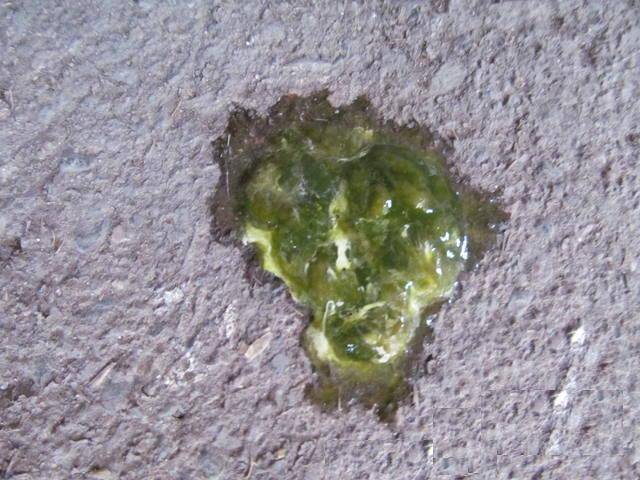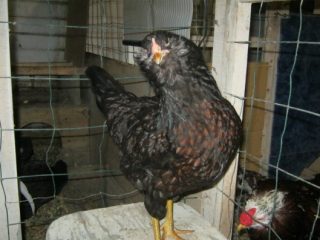Content
Wanting to get 2-3 kg of “chicken meat without antibiotics” from each chicken, owners of private farmsteads buy themselves broiler crosses in the hope of raising environmentally friendly meat chickens. Most often they will be disappointed.
No manufacturer will simply increase the cost of production. Poultry farm owners are no exception. Private owners very quickly find out that diarrhea in broilers is almost inevitable. And without the use of antibiotics and coccidiostats, it is unlikely that it will be possible to obtain domestic meat from chickens. Either broilers are raised using industrial methods, or they receive only half of the planned weight. And sometimes they get nothing at all if the chickens become infected with a disease with a high percentage of deaths.
The weak point of broiler chickens is the gastrointestinal tract. Chicks are born sterile and in sterile conditions. In poultry farms, from the first day, chickens are treated with coccidiostats from the group that prevents the development of immunity to coccidia.
Private owners try to avoid the use of medications, although it is very difficult to maintain the necessary sterility at home.Broiler chickens are highly likely to become infected with coccidia oocysts, which are found in abundance in chicken coops and on paddocks.
Brown diarrhea
Brown diarrhea is a sure symptom of eimeriosis (coccidiosis) in chickens. Eimeria parasitizing chickens are localized mainly in the intestines. Damaging the walls of the gastrointestinal tract in the process of their activity, eimeria cause multiple minor bleedings. Clotted blood, mixing with the “yellow” feed, gives broiler feces a brown color.
The development of diarrhea before clear blood appears in the feces means that the coccidia have caused very serious damage in the chicken's intestines.
Other signs of coccidiosis in chickens: lethargy, dirty, ruffled feathers, reluctance to move.
If chickens show signs of chicken eimeriosis, broilers should be fed coccidiostats as soon as possible. But a veterinarian must prescribe treatment for chickens, since coccidiosis must be differentiated from diseases that require other medications.
Dark brown diarrhea
In the intestinal form of pasteurellosis, which occurs in an acute form, diarrhea in chickens is dark brown in color, sometimes mixed with blood. In addition to diarrhea, chickens suffering from pasteurellosis secrete mucus from the nasal openings. Breathing is difficult. The ridges become blue. There is apathy.
Chickens with pasteurellosis are not treated and are immediately sent to slaughter at the first signs of the disease.
White diarrhea
The appearance of white diarrhea in broilers most likely indicates pullorosis. The chickens could arrive from the incubator already infected or become infected by the new owner.If chicks were infected while still in the egg or became infected immediately after hatching, they have little chance of survival.
Private owners feel sorry for losing money and are trying to cure sick broilers. Very small chickens will die. If a broiler becomes infected from the owner's chicken at about a month of age, its chances of survival are quite high. But by the time they are slaughtered, such chickens will be 2 times smaller than healthy broilers.
Since obviously sick chickens are slaughtered, treatment is carried out for apparently healthy chickens. The veterinarian, after establishing an accurate diagnosis, prescribes a course of treatment with tetracycline antibiotics. Depending on the type of drug, the treatment regimen may differ. Antibiotics are given along with the food. The dosage is prescribed as a percentage in relation to the given feed.
Green diarrhea
In broilers, green diarrhea is most likely due to poor quality feed. Two other reasons: disease with histomoniasis or overfeeding with green food.
With histomonosis, at the middle stage of development of the disease, chicken feces acquire a greenish tint. But it is relatively difficult for broilers to become infected with this disease, since histomonas is transmitted through nematodes or earthworms. If broilers are fed in cages, they are unlikely to come into contact with possible sources of infection.
The easiest type of diarrhea for a private owner is non-infectious indigestion. This type of diarrhea can be successfully treated at home by the broiler owner himself. When diarrhea appears, they find out why the chickens have upset intestinal function.This usually happens if the owner switches the chickens from grain feed to green feed too abruptly. In this case, the chicken will stool in a dark green color.
The second option: low-quality food. Depending on the type of feed, diarrhea may be light green (wet mash with mold) or light yellow (cereal feed).
Non-infectious diarrhea in broilers, how to treat it at home
This is the easiest option for the farmer. He himself can determine what to do when his chickens suddenly have an upset stomach.
Diarrhea in chickens can begin if, after a long winter break, you immediately give them a lot of grass. In this case, the chickens are again transferred to grain feed, and instead of water, rice broth or oatmeal jelly is poured into the drinking bowls.
Whether to give chloramphenicol in this case depends on the circumstances. Again, green feed is introduced into the chickens’ diet gradually, starting with very small doses.
In case of diarrhea due to poor-quality feed, first of all, they find out which component of the diet could cause diarrhea in chickens and remove it from the broiler menu. Chicks are fed chloramphenicol with their feed to destroy the pathogenic microflora that has developed in the intestines. In this case, you can also drink disinfectant solutions of potassium permanganate or furatsilin.
To get rid of diarrhea, you can give broilers strengthening decoctions, a hard-boiled egg or baked potatoes.
Prevention of broiler diseases in private farming
Broilers are not raised on farms. These chickens are intended to be slaughtered at 3 months, otherwise the broilers die from excess muscle mass.To fatten broilers for meat, they buy them either directly from poultry farms or from resellers. The second option is worse, since there is a higher probability of buying already sick chickens.
Before purchasing broilers, it is necessary to disinfect the room in which the chickens, cages and equipment will live. Many of the pathogens that cause diseases in chickens are resistant to either disinfectants or high temperatures. Therefore, complex disinfection is often used, calcining walls, cages and equipment with a blowtorch, and then spraying them with a disinfectant solution. If an item cannot be treated with a lamp (for example, a plastic drinking bowl), it is immersed in a strong solution with a disinfectant for at least 30 minutes.
Brought chickens are kept separately from adult chickens. Broilers are perfectly adapted to growing in cages. This is what they were bred for. Without movement, broilers gain weight better. Therefore, it makes no sense to provide broilers with free range with the risk that the chickens will become infected with worms and histomoniasis. In addition, when kept in disinfected cells, there is a chance to actually do without the use of antibiotics and coccidiostats.
Conclusion
When diarrhea appears in chickens, you should not just self-medicate. It is imperative to invite a veterinarian to establish an accurate diagnosis. Sometimes, after purchasing infected chickens, the infection began to “walk” throughout the locality. This happened because the owner of chickens infected with a serious infection (pullorosis or pasteurellosis) regretted slaughtering them right away and tried to treat them with folk remedies.
On a private farm, you must try to comply with the standards for keeping broilers and monitor the quality of feed.
















